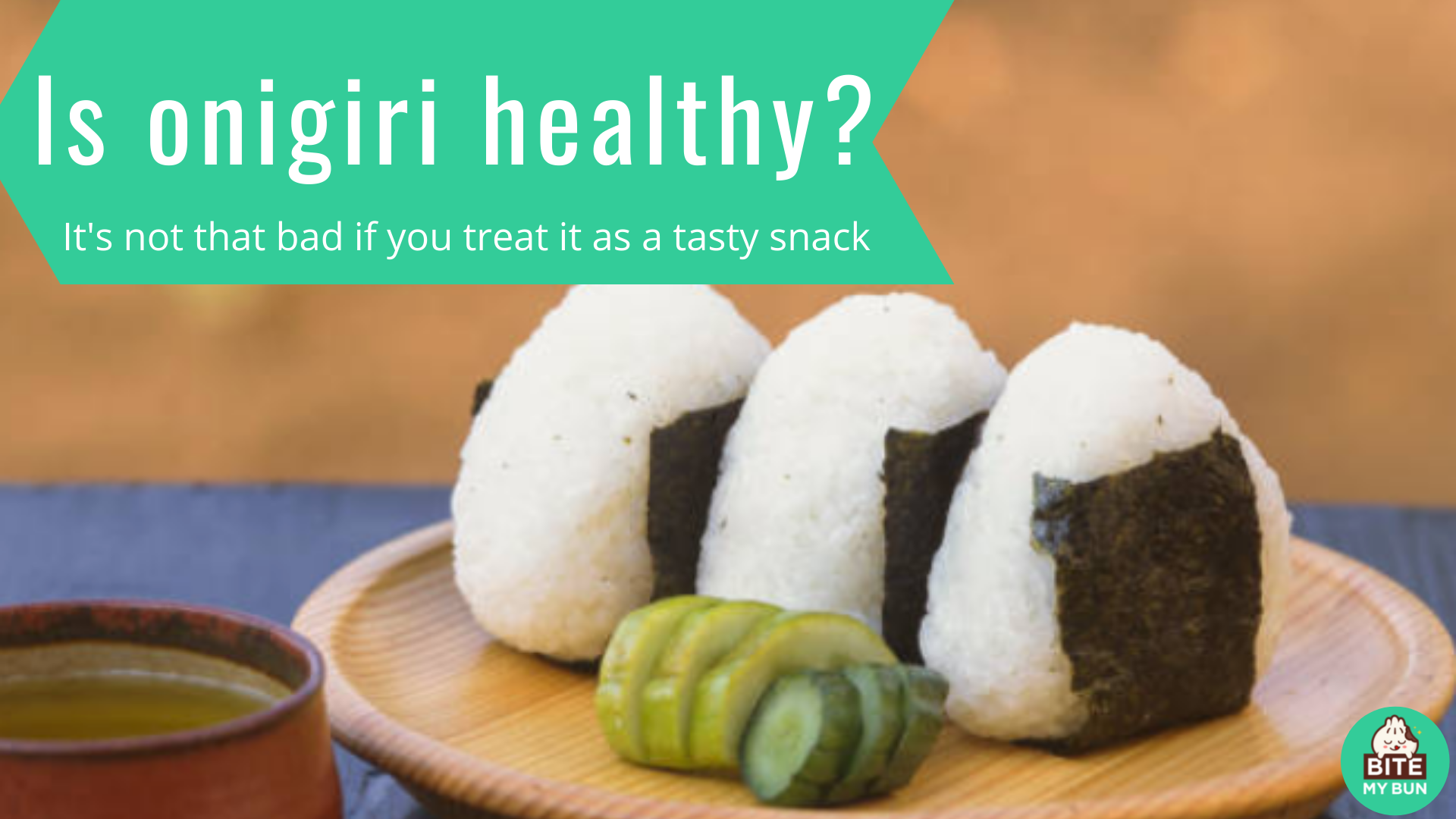Is onigiri healthy? It’s not that bad if you treat it as a tasty snack
Did you discover onigiri? And? How was it? I’m kind of addicted to them taking those little fluff balls everywhere. But, is it healthy for you?
Since onigiri is mostly made out of rice, it’s high in carbohydrates and low in protein so it has a lot of calories. Since it is so dense, it’s a bit hard to manage just a bite. As a snack, it’s pretty good for you, as lunch not so much.
Let’s look at all of the ingredients and how those affect the nutritional value of onigiri.

Onigiri is widely known throughout Japan as a main dish or a side meal and can come in many shapes, from the roll to the familiar triangle shape,
Onigiri is well known for being delicious to eat, and portable as well. They’re like mini snack cakes, though that might be a bit of a misnomer.

Check out our new cookbook
Bitemybun's family recipes with complete meal planner and recipe guide.
Try it out for free with Kindle Unlimited:
Read for freeIn this post we'll cover:
How onigiri is made
Rice, the main component of onigiri, does have a high carbohydrate rate. For example, on the chart listed on Healthline.com, for 1/3 cup of white rice, there are 68 calories and 14.84 grams.
While onigiri can vary in size and rice count, they are densely packed, so it’s something to be aware of.
In addition, do you know that black wrap around the base of the onigiri, or one that envelopes it completely? That’s seaweed. Cooked, mind you.
Now, unlike rice, seaweed is pretty good for you. It has a low-calorie count, a high protein amount and contains many essential minerals. So, all in all, it’s not a bad thing to have on the dish.
Sugar and vinegar are what hold onigiri together, and as we all know, sugar is a pretty good way to gain weight.
Now, sugar by itself isn’t bad for you you do need some of the vitamins in your everyday life, but it, not something you want too much.
Also read: onigiri vs musubi, how they differ
Adding it up
So, those are most of the ingredients in onigiri, and so far, it is not that bad. But, the main threat in onigiri isn’t the single one, but the multiple.
A single onigiri is a tasty Japanese snack of 180 calories, give or take personal tastes. But, since they’re so small and easy to make, it’s easy to have one, then another, and another.
They are quite tasty, and the main problem with onigiri is that they are quite low in protein but high in calories and carbohydrates. So they tend to stack up relatively quickly.
And than you haven’t tried Yaki onigiri yet, the perfect Japanese grilled rice ball snack for drinks
Different types of onigiri
But, as I said before, there are other versions of onigiri that can be good for you and are just as tasty.
Chicken onigiri
Instead of rice, chicken is wrapped in seaweed. It’s just a ball of chicken, and I’m told it can be quite tasty.
It has a low-calorie count and a high protein one. That said, this isn’t an option for vegan or vegetarians, so let us look at one more.
Salmon onigiri
While not an option for vegetarians (or those who don’t make exceptions for seafood), salmon onigiri is a good choice for those looking to lose weight and is a decent choice for vegans.
Conclusion
So, yeah, a quick recap. Onigiri, in its rice form, isn’t the best choice for those going on diets. But, it won’t kill you if you don’t need to worry about your weight.
Plus, it is not that bad with its seaweed wrap. So, no, while it’s not healthy, it’s not bad for you either.
Check out our new cookbook
Bitemybun's family recipes with complete meal planner and recipe guide.
Try it out for free with Kindle Unlimited:
Read for freeJoost Nusselder, the founder of Bite My Bun is a content marketer, dad and loves trying out new food with Japanese food at the heart of his passion, and together with his team he's been creating in-depth blog articles since 2016 to help loyal readers with recipes and cooking tips.
